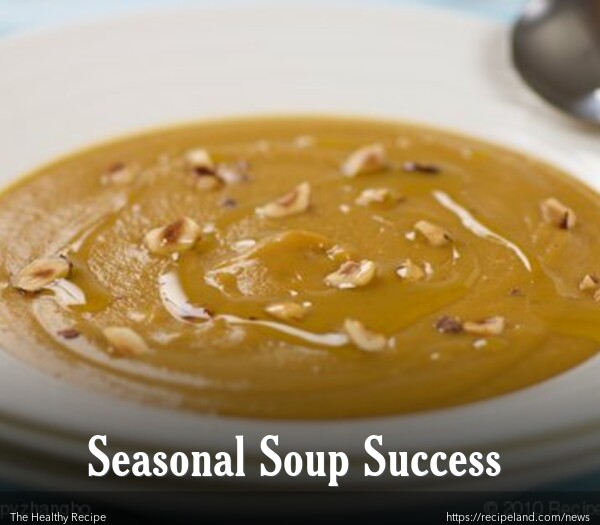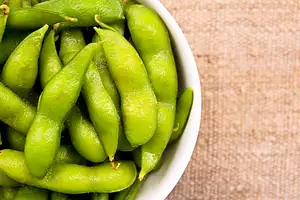Do you crave a steaming bowl of thick and flavorful soup on cold nights? Is snuggling under a warm blanket, with a warm mug of soup and a great book your idea of the perfect winter evening? Are you confident in your ability to craft the perfect bowl of steamy, delicious soup? Keep reading to learn how to turn your favorite soup recipe into a tasty success!
- Start your soup off right with homemade stock or broth. As you prepare meat, save the broth you create and freeze it to when you make soup. Plan ahead and make a double batch of broth or stock. Use half of it for soup today and freeze the other half. If you don’t have the time to make your own stock or broth, try to choose a shelf-stable or bouillon based broth that is free from preservatives and additives.
- Great soup only needs a few tools: a heavy pot or Dutch oven, a wooden spoon, a blender, and a soup ladle.
- Try to use as many fresh vegetables as you can in your soup, but use frozen as well. Many of the vegetables in your grocer’s freezer are actually fresher than those in the produce department because they were frozen immediately after harvesting.
- Avoid dropping the temperature of your soup by adding ingredients that are warm or have been brought to room temperature.
- Cook pasta or rice separately and add it to your soup just before you are ready to serve. This will keep your pasta or rice from becoming overcooked or mushy.
- If your soup recipe calls for lentils or beans, add extra liquid and cook dried lentils or beans in the soup. This will give your soup a deeper, richer flavor.
- When adding cheese to your soup, remove it from the heating element first. This prevents the cheese from curdling. Stir the cheese in, allow it to begin melting, and then put it back over heat.
- Make sure to taste your soup as you go. Pull a little bit out and allow it to cool slightly before tasting it so you don’t burn your mouth. Adjust the seasonings as needed.
- Soup is the perfect vehicle for leftovers. Add in pulled or cubed chicken or ground beef. If you have leftover roasted vegetables, simply blend them with a little bit of liquid. Gradually add more liquid until the soup comes to the texture you like. Then all you have to do is season and heat the soup through.
- If you have the time, make your soup earlier in the day or the day before you plan to eat it. Heat it through when you are ready to eat. This gives your soup a deep and rich flavor.
- As you taste your soup, if it is too salty, add a peeled potato and then let your soup simmer for 10-15 minutes. Take out the potato and save it for a snack. Adding the potato soaks up the extra saltiness. Do not try to remove a salty flavor by adding sugar!
- If your soup recipe calls for wine, be very careful about the amount of salt you add. It may sound strange, but wine brings out the salty flavor in your soup.
- Soups that include wine need to be brought to a boil and cooked for 10-15 minutes to get rid of the sharp alcohol flavor.
- A soup that is full of vegetables can be thickened by pulling a ladell or two of veggies out of the soup and blending them. Add the blended vegetables back into the soup and simmer. You could also add in leftover mashed potatoes or pureed beans to thicken your soup.
- Soups that do not include vegetables can be thickened with a flour paste. Simply mix 1 Tbsp flour to 2 Tbsp stock or milk. Slowly stir in the flour paste and simmer for 10 minutes. You will need 1 batch of flour paste for every 2 cups of soup.
- Cream or half and half could also be used to thicken your soup. Be sure to add in the cream or half and half after it has been warmed and close to the end of your cooking process to prevent the cream or half and half from changing texture.
- For a thick soup from the beginning, use a roux. Mix one part butter to one part flour. Cook over low heat. As it cooks, the roux will become darker in color. The longer the roux cooks, the better flavor it will give your soup. After the roux has cooked to your desired color, begin adding in your other soup ingredients. Roux work very well in stew, gumbo, or jambalaya recipes.
- Using a slurry made of cornstarch and water or broth is an awesome gluten-free thickener. Simply whisk together 1 Tbsp cornstarch and 2 Tbsp cold liquid. Whisk some of your soup liquid into the slurry. Then add your slurry mixture back into your soup.
- Try pairing your soup with garnishes such as toasted nuts, grated cheese, crumbled bacon, croutons, or a dollop of sour cream,
- Serve your soup with something to dip. Soak up the delicious liquid you have created with corn sticks, corn muffins, bread sticks, crackers, or dinner rolls.
Winter Soup Recipes:
Hearty Roasted Butternut Squash and Apple Soup
Russian Mushroom and Potato Soup
Simple Homemade Chicken Noodle Soup
Too SImple Cream of Chicken Noodle Soup
Family Favorite Creamy Potato Soup
Cheesy Roasted Pear, Butternut and Leek Soup
Acorn Squash and Sweet Potato Soup
Accessories:










Comments